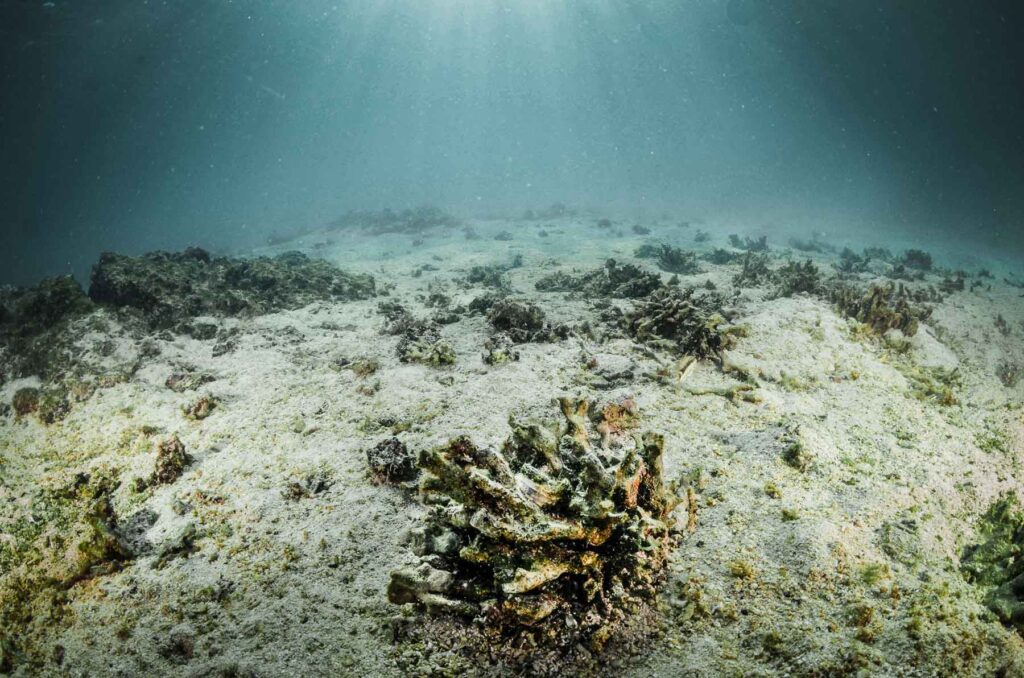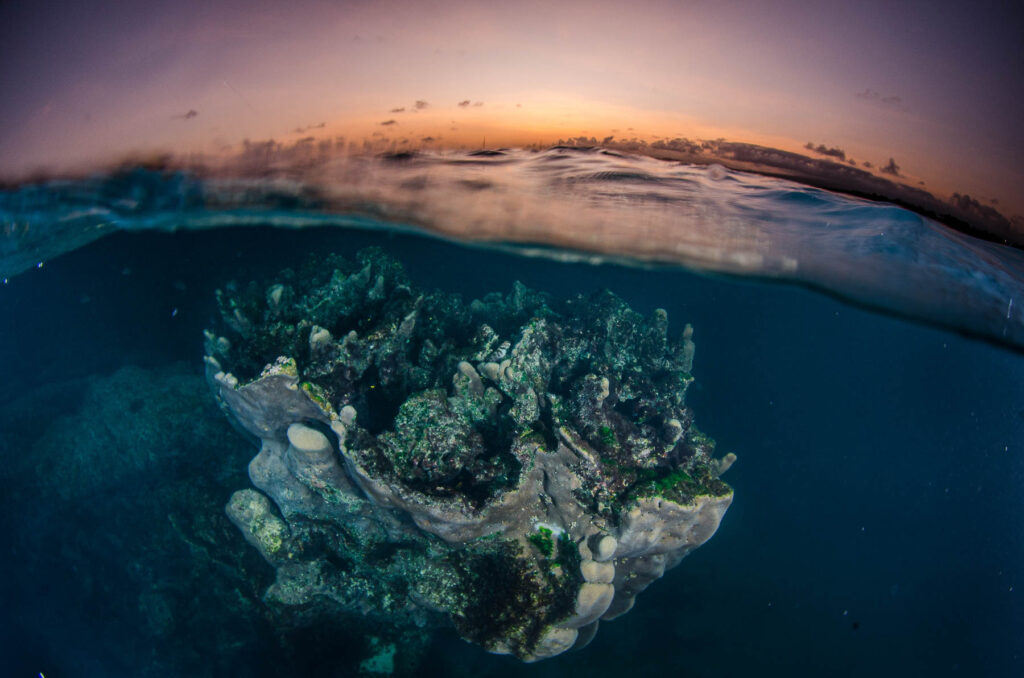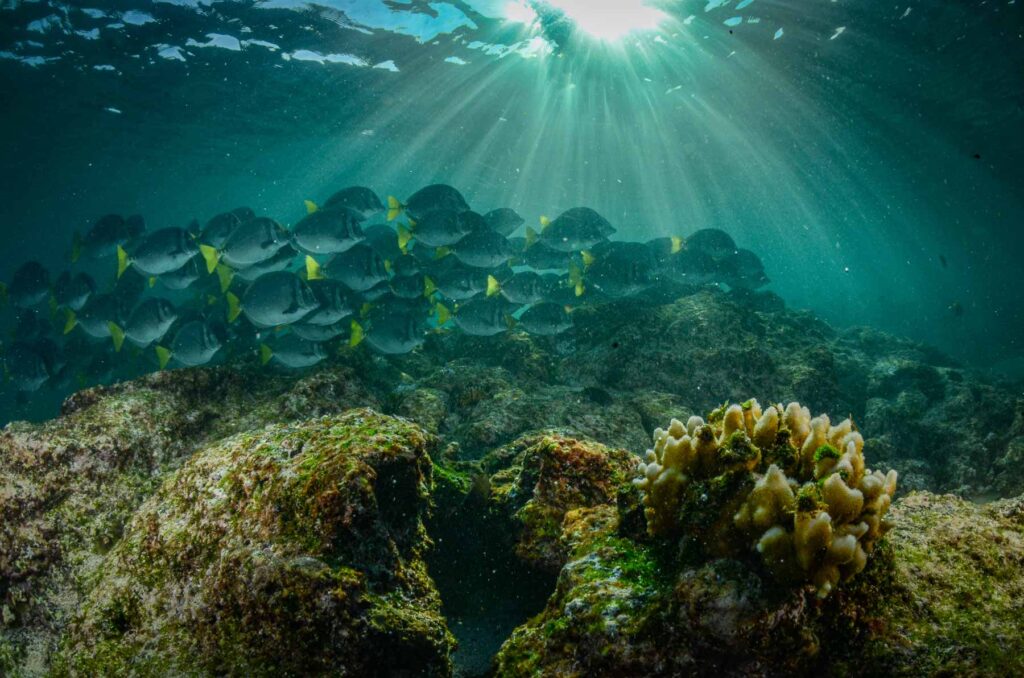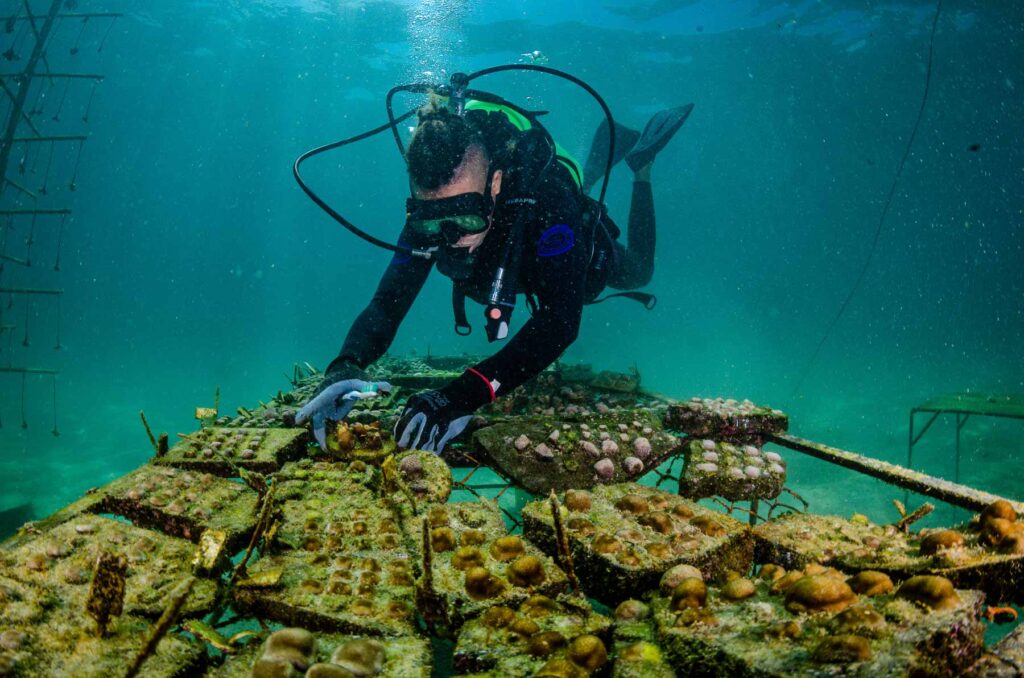In the Galapagos, every species tells a story of dramatic natural selection, shaped by the powerful forces of oceanographic extremes. The key to this evolutionary marvel lies in the relentless sway of warm and cool-water currents, profoundly impacting all its inhabitants, from Darwin finches to fragile reef-building corals

Historic Reefs
Once hosting some of the most diverse reef ecosystems in the Eastern Pacific, the Galapagos islands were home to 17 vibrant and unique coral reefs. However, in 1982, a catastrophic “el Niño” event devastated the archipelago, leading to the loss of 97% of its coral cover and the disappearance of 16 of its 17 historic coral reefs.
Remarkable Resilience
Despite this staggering loss, the few coral survivors have adapted to the Galapagos’ ever-changing marine environment, showcasing remarkable resilience to subsequent mass-bleaching events. It’s believed that the 1982 event worked as a bottleneck, naturally selecting the hardiest and most resilient varieties of corals, individuals which may hold the key to coral survival and resilience in a changing climate.


A Living Treasure
Galapagos coral are living treasures, remnants of their past richness and the last survivors of their lineage, scattered and isolated in an otherwise rocky substrate. Yet their small populations and limited diversity makes them exceedingly vulnerable to extinction, limiting their potential for natural recovery and long-term survival.
Reef Revival
In order to protect and restore the Galapagos coral legacy, we created the Galapagos Reef Revival Project, a collaborative initiative focused on coral research and restoration in the archipelago.
Join us in our mission to revive the coral reefs of the Galapagos.









